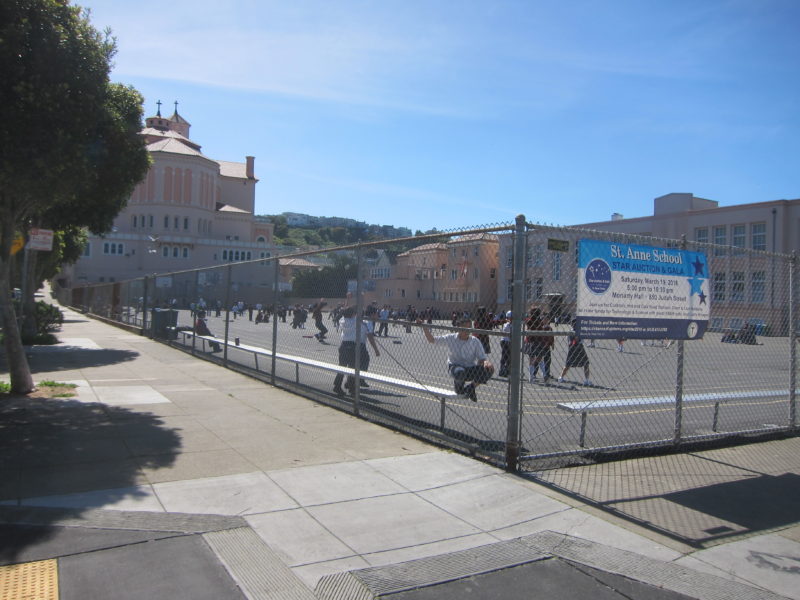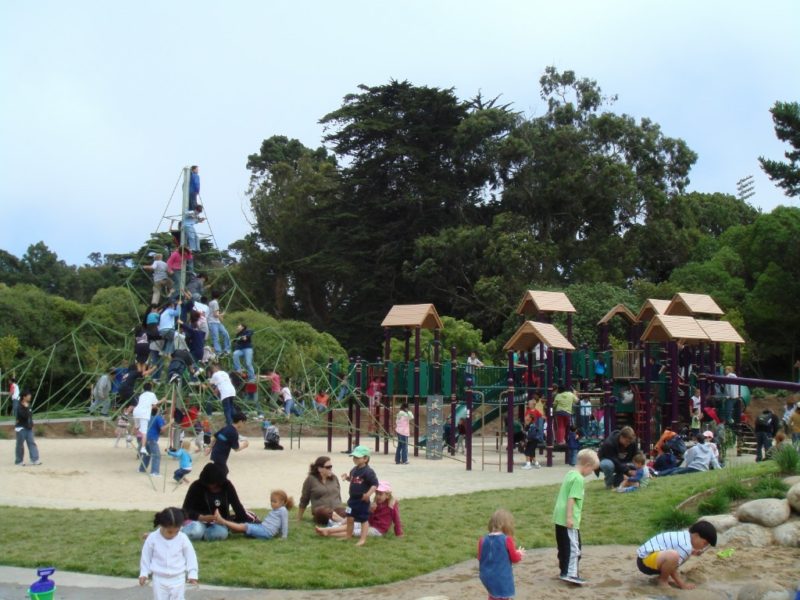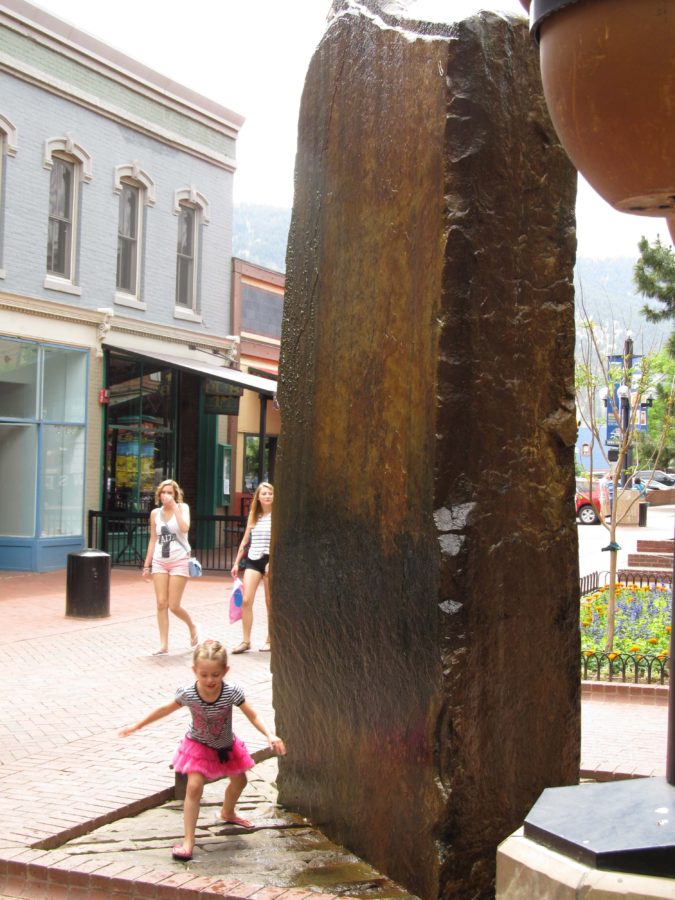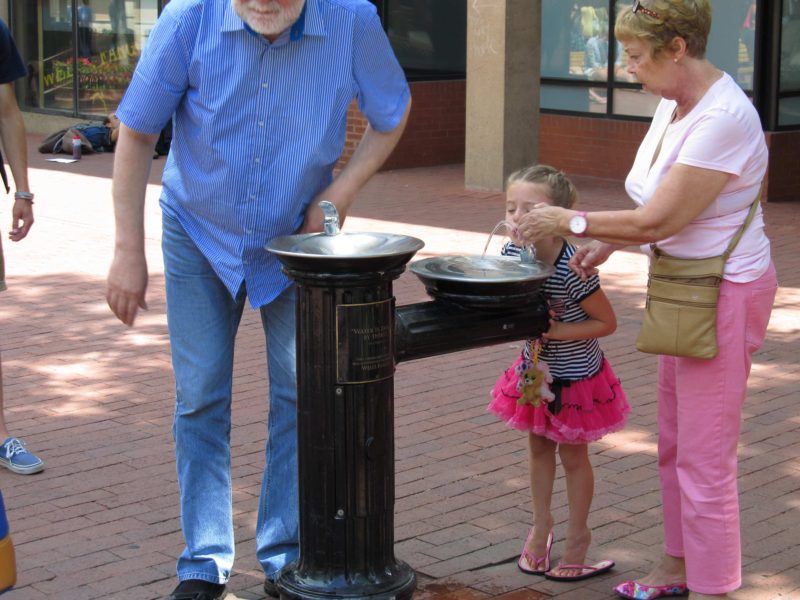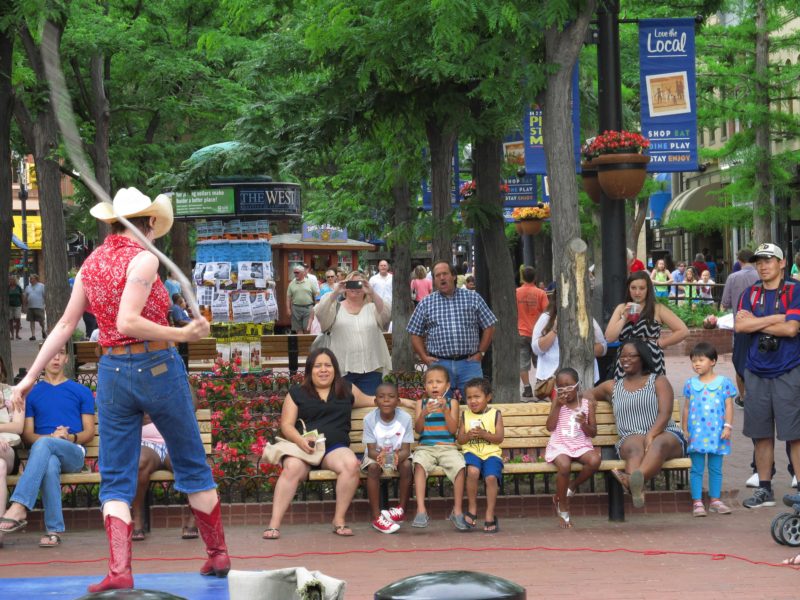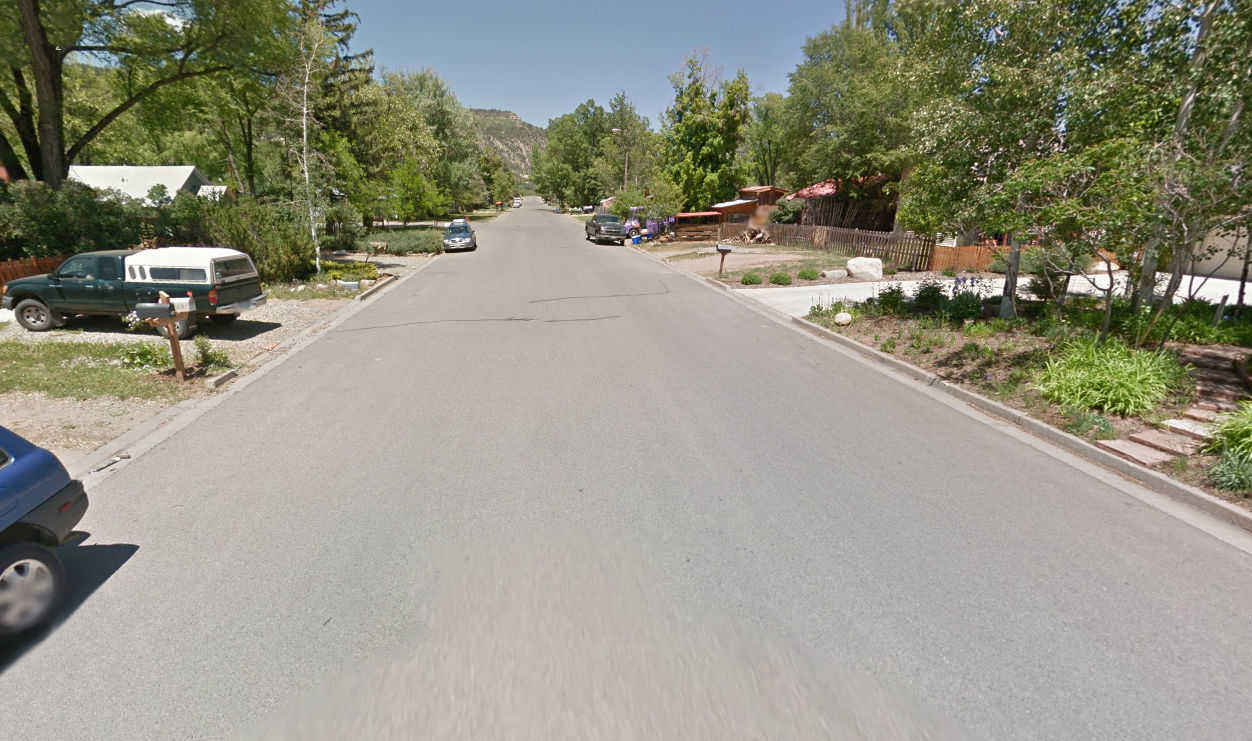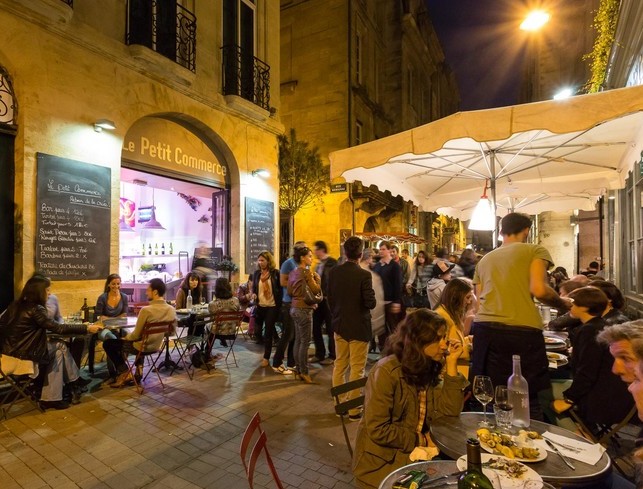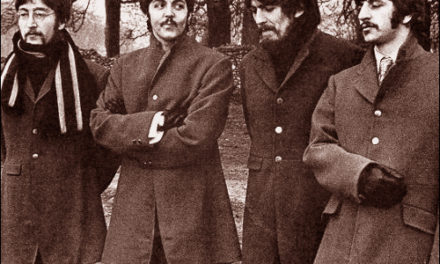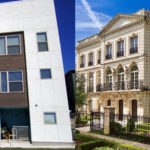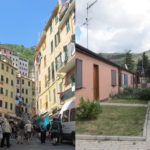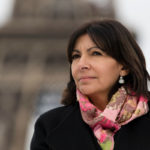The St Anne School playground is around the corner from my house. I often think about the children playing there, beautiful young people in a parking lot behind a chain link fence.
That boy hanging on the fence and looking out into the street, what’s he thinking? I often wonder if he’d like to hop over the fence and go exploring in the real world – talk to the old man at the ice cream shop or go into the supermarket and mess around in the produce section. Instead, he’s stuck behind a fence.
That’s how we treat children in society: We cordon them off.
The Koret Children’s Quarter is up the road from the St Anne playground. On first glance, it’s like heaven made for children. Kids zoom down the concrete slide on pieces of cardboard, dig in the sandpit, and scale the rope climbing structure. They’re having a ball!
And yet, here’s the sign at the playground’s entrance:
It’s essentially saying: “Children should be cordoned off from our dangerous society.”
This sign embodies so much of what’s wrong with how we treat children. To start, it implies that strangers are a major threat to children. The statistics do not bear this out. According to the U.S. Department of Health and Human Services Administration on Children, Youth and Families, almost 80% of those who abuse children are parents and other relatives; an additional 5% are the unmarried partner of a parent or another person in a position of care (2005 figures).
The sign also denies adults their natural need and enjoyment of being around children.
Is the old man on this bench a creep for looking at that child? Of course not. Most people love being near children, even children they don’t know. Seeing children laugh and play is one of life’s pleasures and rejuvenates people of all ages.
Most profoundly, the sign assumes that the best way to protect children is to fence them off from society. You see this approach – taking things away to deal with harmful behavior – everywhere. It’s in benches being removed to stop homeless people sleeping on them, with the result being that the homeless are still there but nobody else comes anymore. You see it with children too. And yet, despite decades of cordoning them off, more children are being abused than ever.
In fact, here’s the basic premise of playgrounds: To be safe, children belong in fenced-off areas. It’s time to challenge this notion…
Where’s are this little girl’s parents or guardians? They’re probably close by but they’re not hovering over her. And yet here she is in public, enjoying herself. No fences, no signs.
Plaza Perspective readers have been here before. This is the Pearl Street Mall in Boulder, Colorado, a 4-block pedestrian mall in the downtown commercial area.
Small children are all over the mall. They’re safe, yet still a part of society. Here, young children can be proper people, enjoying the full range of activities on offer:
Even the (perhaps unnecessary) child-oriented play areas are open to everybody. People regularly stop by and watch the children play…
Let’s bring children out into society where they can be treated like real people and learn from the world around them, where they’re safe, and where adults can also benefit from the vitality that children bring to the world.
You can see this on your own street by having a block party. The children will show you how to do it.
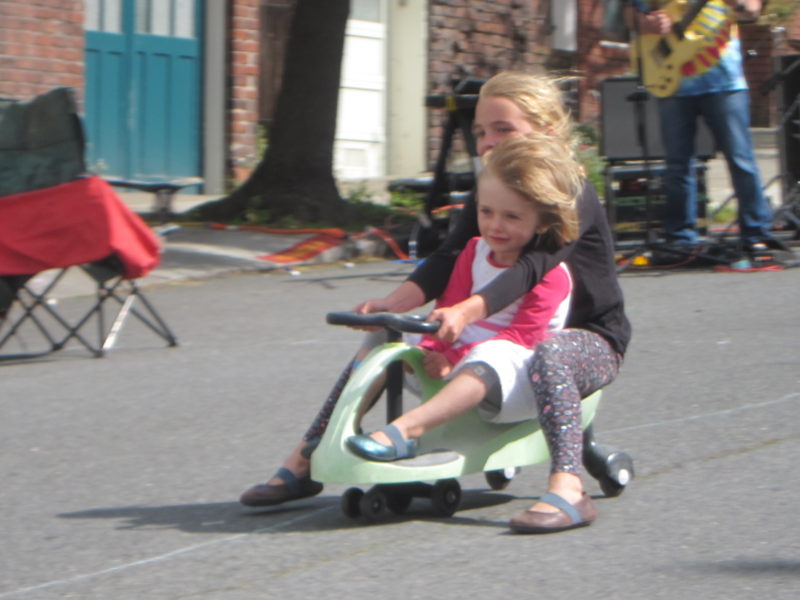 |
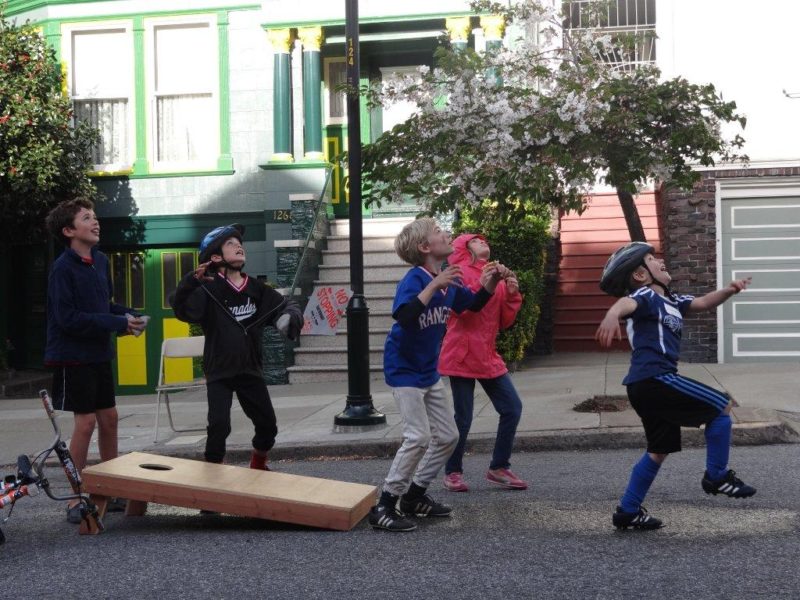 |
So, let’s give children what they need. Firstly, this involves reforming our built environment to make it safe for children to be among us, especially by removing automobiles from key urban areas and installing public spaces like the Pearl Street Mall. And on a deeper level, we need to agree that children belong in society, not shut behind fences.
You know when you’re onto something when Cat Stevens has written a song about it. We’ll end with his classic “Where Do The Children Play?”

